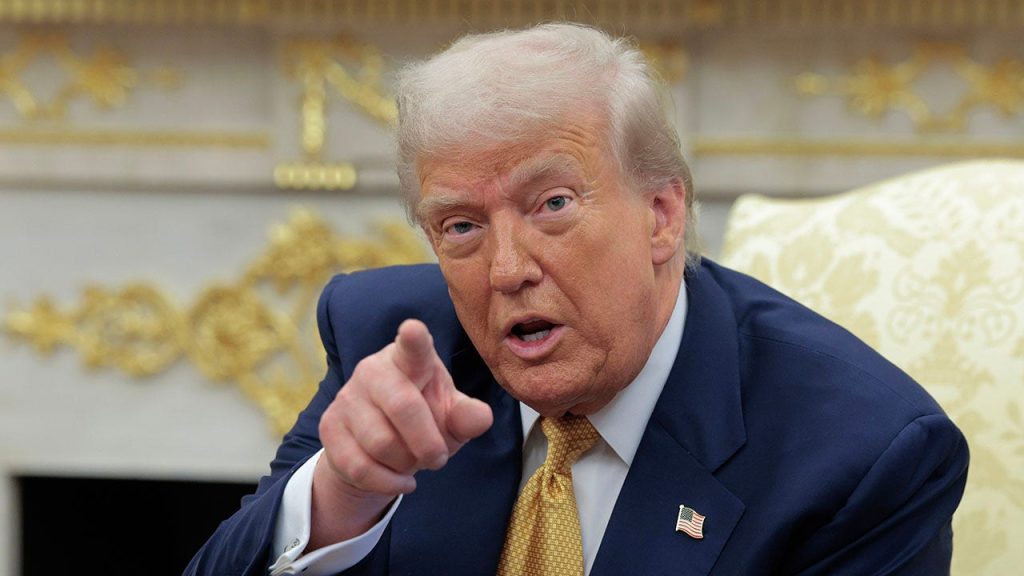Federal Appeals Court Rules Trump’s Tariffs Largely Illegal
In a significant blow to former President Donald Trump’s trade policy agenda, a federal appeals court has ruled that many of his imposed tariffs exceed presidential authority under law. The U.S. Court of Appeals for the Federal Circuit determined that tariffs implemented through the International Emergency Economic Powers Act (IEEPA) overstepped legal boundaries. The court’s 7-4 divided decision allows the controversial tariffs to remain temporarily in place until October 14, providing the administration time to appeal to the Supreme Court. This ruling represents a pivotal moment in the ongoing debate about executive power in trade policy and could significantly impact Trump’s economic strategy should he secure a second term.
The case centers on Trump’s “Liberation Day” tariffs announced on April 2, which he implemented using emergency powers granted under the 1977 IEEPA legislation. Trump’s legal team had argued that these actions followed precedent established during the Nixon administration, which used similar emergency measures during the 1971 economic crisis following the dollar’s decoupling from gold. However, the court rejected this reasoning, stating in its opinion that “the Trafficking and Reciprocal Tariffs imposed by the Challenged Executive Orders exceed the authority delegated to the President by IEEPA’s text.” The ruling affirmed a lower court’s declaration that these orders are “invalid as contrary to law,” raising serious questions about the executive branch’s ability to unilaterally reshape trade policy through emergency declarations.
Trump responded forcefully to the ruling on Truth Social, characterizing the court as “Highly Partisan” and warning that removing these tariffs “would be a total disaster for the Country.” He defended tariffs as essential tools for addressing trade deficits and unfair practices by other nations, arguing they strengthen America’s economic position. “It would make us financially weak, and we have to be strong,” Trump wrote, adding that “The U.S.A. will no longer tolerate enormous Trade Deficits and unfair Tariffs and Non Tariff Trade Barriers imposed by other Countries, friend or foe.” His administration has maintained that the tariffs remain in effect despite the ruling, with White House spokesman Kush Desai expressing confidence in “ultimate victory on this matter” and asserting that Trump “lawfully exercised the tariff powers granted to him by Congress.”
The economic impact of these tariffs has been substantial, with revenue reaching $142 billion by July—more than double the amount collected during the same period in the previous year. This significant increase highlights the transformative effect of Trump’s aggressive tariff policy on both government revenues and trade relationships. While the Constitution grants Congress the power to impose taxes, including tariffs, lawmakers have gradually delegated more trade authority to the executive branch in recent decades. This case represents a potential turning point in that power dynamic, as courts reconsider the boundaries of presidential authority in trade matters. Trump has positioned tariffs as a central component of his economic vision, describing them as “the best tool to help our Workers, and support Companies that produce great MADE IN AMERICA products.”
The timing of this ruling carries particular political significance as it arrives during a presidential election year when trade policy remains a divisive and consequential issue. Trump has made tariffs a cornerstone of his proposed second-term agenda, framing them as leverage to compel trading partners to renegotiate deals more favorable to American interests. In his social media response, he explicitly tied the issue to Labor Day, positioning tariffs as worker-friendly policies that support domestic manufacturing. The former president’s forceful reaction—claiming the ruling would “literally destroy the United States of America” if allowed to stand—underscores how central tariffs have become to his economic vision and political identity.
As this case potentially moves toward the Supreme Court, it represents more than just a legal dispute over tariff authority—it embodies fundamental questions about the separation of powers, presidential emergency authorities, and America’s approach to global trade. Trump has signaled his intention to pursue the matter to the nation’s highest court, expressing confidence that “with the help of the United States Supreme Court, we will use [tariffs] to the benefit of our Nation, and Make America Rich, Strong, and Powerful Again.” The resolution of this case could establish lasting precedent regarding presidents’ ability to unilaterally reshape trade policy and will likely influence how future administrations navigate the complex intersection of international commerce, executive authority, and congressional oversight. With billions in tariff revenue and countless industries affected, the ultimate outcome will have far-reaching consequences for the American economy, international trade relationships, and the constitutional balance of power.


